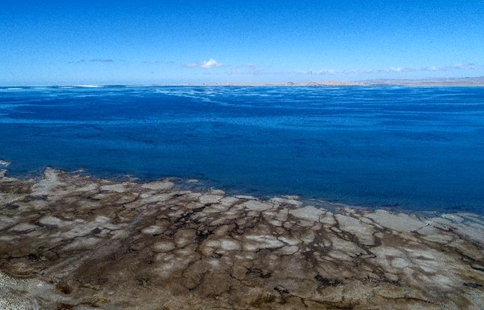LOS ANGELES, Oct. 19 (Xinhua) -- The U.S. National Aeronautics and Space Administration (NASA) said Thursday that it has authorized a second extension of the Dawn mission at Ceres, the largest object in the asteroid belt between Mars and Jupiter.
During this extension, the mission will continue at Ceres for the remainder of its scientific investigation.
A priority of the second Ceres mission extension is collecting data with Dawn's gamma ray and neutron spectrometer, which measures the number and energy of gamma rays and neutrons.
This information is important to understand the composition of Ceres' uppermost layer and how much ice it contains, the U.S. space agency said in a statement.
The Dawn team is currently refining its plans for this next and final chapter of the mission.
Because of its commitment to protect Ceres from earthly contamination, Dawn will not land or crash into Ceres. Instead, it will remain in a stable orbit indefinitely after its hydrazine fuel runs out.
Mission planners estimate the spacecraft can continue operating until the second half of 2018.
The spacecraft will descend to lower altitudes than ever before at the dwarf planet, which it has been orbiting since March 2015.
The Dawn flight team is studying ways to maneuver Dawn into a new elliptical orbit, which may take the spacecraft to less than 200 km from the surface of Ceres at closest approach. Previously, Dawn's lowest altitude was 385 kilometers, according to NASA.
The extended mission at Ceres additionally allows Dawn to be in orbit while the dwarf planet goes through perihelion, its closest approach to the Sun, which will occur in April 2018.
In the ten years since its launch from Cape Canaveral, NASA's Dawn spacecraft has orbited the two most massive bodies in the asteroid belt between Mars and Jupiter, giant asteroid Vesta and dwarf planet Ceres.
The sapcecraft overcome defective components that threatened to derail the mission on its 4 billion-mile voyage, discovering unexpectedly rich geologic tapestries suggesting both destinations have a watery past.
Ceres, with an average diameter of 950 km, is the largest object in the main asteroid belt between Mars and Jupiter. By comparison, Vesta has an average diameter of 525 km, and is the second most massive body in the belt.
Ceres is of great interest to astronomers and scientists, who believe that the small dwarf planet may also be a large water reservoir in the inner solar system aside from the Earth. However, scientists are unsure how much of that water is actually liquid.

















